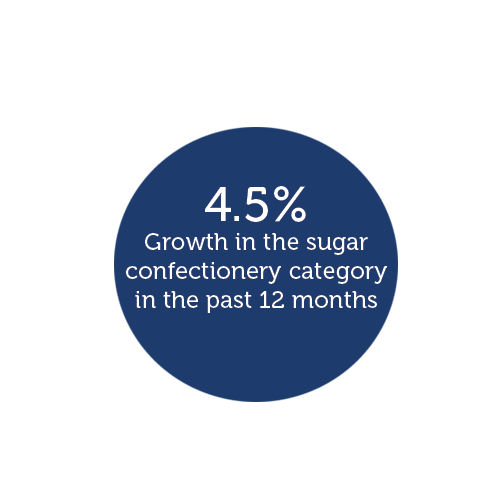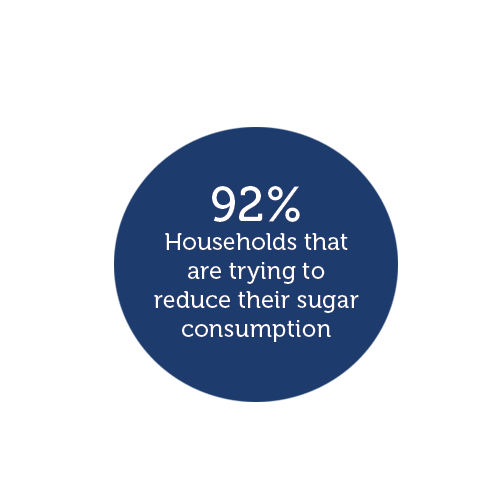Tom Gockelen-Kozlowski explores how you can make the biggest possible profit from sugar confectionery at a time when health concerns are high
Sugar confectionery is a £1.2bn category in the UK and according to one of the category’s behemoths, Nestlé, it remains strong despite wider concerns about health and diet.
Research shows that while increasing numbers of consumers are looking to manage their sugar intake, they do not want to abstain from treats, according to Nestlé.
With summer holidays around the corner and an autumn filled with events to follow, there are many opportunities for such treats.
“Sugar confectionery has been in high demand over the past 12 months, having grown by 4.5%, and this growth is expected to continue as sugar confectionery remains hugely popular with both adults and children,” says Mark Walker, sales director at Swizzels.
He adds: “With outdoor family gatherings on the rise once again for summer, shoppers will be on the lookout for sugar confectionery to share.”
But how can you make sure that it is your retailer customers who take the most advantage of this? There are trends and product developments that will lie at the heart of any successful strategy.
Big night in
 The Big Night In trend shows no sign of slowing, according to suppliers. But Dan Newell, confections marketing manager at Mars Wrigley Confectionery, says that opportunities for Big Nights In will grow over the next few months.
The Big Night In trend shows no sign of slowing, according to suppliers. But Dan Newell, confections marketing manager at Mars Wrigley Confectionery, says that opportunities for Big Nights In will grow over the next few months.
He adds: “Creating a clear display that communicates the Big Night In occasion draws shoppers into the fixture and cross-category confectionery promotions will certainly encourage purchases.”
On the horizon are big events such as the new football season and TV’s ever-popular Great British Bake Off, so reminding retailers of these opportunities with carefully-chosen displays and promotions certainly makes sense.
Sugar-free boom
Brands such as Wrigley and Trebor have long offered customers sugar-free mints and gums, but as customers look to reduce their sugar intake, demand for reduced-sugar and sugar-free products across the wider sector is growing rapidly, and retailers do not want to be left behind.
One supplier that has made a substantial move in this direction is Perfetti Van Melle, which offers a low-sugar Fruittella range and sugar-free Fruittella Gums and Foams. Trade marketing manager Mark Roberts says: “Getting the right flavour, texture and taste experience for our products is crucial. For example, fruit juice helped to remove the sugar in Fruittella 30% Less Sugar, but ensured the flavour and product experience that is expected in a Fruittella product was maintained.”
Sharing is growing
 Another brand to reduce its sugar is Nestlé’s flagship sugar confectionery brand, Rowntrees, which has launched Fruit Pastilles 30% Reduced Sugar and Randoms 30% Reduced Sugar. In a sign of the larger sharing bag’s relevance, these were immediately launched in this format.
Another brand to reduce its sugar is Nestlé’s flagship sugar confectionery brand, Rowntrees, which has launched Fruit Pastilles 30% Reduced Sugar and Randoms 30% Reduced Sugar. In a sign of the larger sharing bag’s relevance, these were immediately launched in this format.
Similarly, Mars Wrigley Confectionery has transferred its successful bottles format – first established in the gum category – to the Skittles brand, which has helped take it to annual sales of £33.7m across all channels. “Bottles are the most impulsive confectionery purchase format, so this innovative pack offers a great opportunity for retailers,” says Mars Wrigley’s Newell.
Grown-ups
Proposals to restrict advertising to children and ban supermarkets from stocking confectionery near tills mean major brands are switching focus to the adult market.
Two of Mondelez’s big developments this year clearly reflect this strategy. In March, Wine Gums Mocktails were launched to broaden the brand’s appeal to younger adults, according to trade communications manager Susan Nash. Since May, the company has also been running a promotion on packs in its Maynards Bassetts range. This offers 1,000 prizes designed to appeal to those aged 20 to 45 years old.
“The Sweet Sounds of Summer promotion offers consumers the chance to win exciting music-related prizes, including gig tickets, headphones and portable speakers,” says Nash.
Kids still key
According to Nestlé, 92% of households are trying to reduce sugar consumption and the number of sugary products they buy. Yet the size of the overall sugar confectionery market shows demand for treats is strong.
With this in mind, Nestlé is launching a Kids Go Free promotion, which puts the brand’s range centre stage in treasured days out among families. Highlighting the relevance to today’s shoppers, the promotion extends to Rowntree’s reduced-sugar products. “On-pack promotions are an excellent way for retailers and wholesalers to boost their confectionery sales, as they are proven to increase both penetration and frequency of purchase,” says a spokesperson for the manufacturer.
Sweet shop magic
Most convenience retailers will no longer stock a full pick ’n’ mix offer, but suppliers are trying to incorporate consumers’ love for the sweet-shop experience into their product development.
Swizzels’ Squashies range is an extension of its Drumstick range. It is now available in a smaller, 50p pricemarked format, with a permanent, on-pack multibuy three-for-£1 promotion. According to Swizzels’ Walker, this offer is “perfect for driving impulse sales from shoppers” – a fact of which retailers are increasingly aware.
“Drumstick Squashies is Swizzels’ bestselling product and Swizzels’ number-one selling brand in the wholesale channel,” says Walker. “In many instances, it is also the bestselling item on the confectionery fixture, making it a must-stock.”
Heritage
In another example of hoping sentiment can win over shoppers’ concerns about sugar intake, brands are emphasising their heritage. Fox’s Glacier Mints is one of the most established brands in the confectionery category, and this year marks its 100th anniversary. To celebrate, the brand has created a new pack design.
“We also just launched the first new mint edition in Fox’s 100-year history with the unveiling of Glacier Spearmints,” adds Andrew Ovens, marketing manager at Big Bear Confectionery. “Made with natural mint oils, the new Fox’s Glacier Spearmints offers a milder, sweeter flavour profile than classic Fox’s Glacier Mints.”
Swizzels, meanwhile, turns 90 this year and is running a competition in which one lucky consumer will win a VIP tour of the company’s factory and have the chance to design their own new product.
Strong consumer awareness of such marketing campaigns means your depot or online store should carry the necessary stock so that you can cope with a spike in demand.

“A lot of older customers come in and buy newspapers – which are next to our sweets display – and a bag of sweets. All ages are price-conscious these days, so £1 bags are about 50% of our range. With new products, a good price in-depot will get us to stock it.”
Julie Dhura, Jules Convenience Store, Telford, Shrops

“We have a lot of teenagers and adults, rather than kids, so I have to stock big brands such as Fruit Pastilles, Fruit Gums and Haribo. £1 pricemarked bags are successful, but so is margin, so I go to Dhamecha for these products, as well as Londis, my symbol group.”
Ash Patel,Gerhold Fine Food & News, London
 “Our range is now entirely £1 on sugar confectionery. We shop around at Ewings in Barnstable, our local cash & carry, and a forecourt wholesaler called CTC for big brands such as Haribo, Bassetts and Rowntree’s on promotions, where we can get a 40% margin and buy enough to last to the next promotion.”
“Our range is now entirely £1 on sugar confectionery. We shop around at Ewings in Barnstable, our local cash & carry, and a forecourt wholesaler called CTC for big brands such as Haribo, Bassetts and Rowntree’s on promotions, where we can get a 40% margin and buy enough to last to the next promotion.”
Mark Ansell, Liskeard News, Liskeard, Cornwall
 “I go for anything weird and wacky when building my sugar confectionery range – monkey fidget spinners and Ring Pops have done really well. With these products, I will not stock anything with less than a 35% margin. I have not seen any reduced-sugar products yet, but I would have to taste them before I would stock them.”
“I go for anything weird and wacky when building my sugar confectionery range – monkey fidget spinners and Ring Pops have done really well. With these products, I will not stock anything with less than a 35% margin. I have not seen any reduced-sugar products yet, but I would have to taste them before I would stock them.”
Ferhan Ashiq, Levenhall Village Stores, Musselburgh
1. Build your range of reduced sugar and sugar-free products to meet consumer concerns.
2. Encourage retailers to think about shopper missions such as the Big Night In.
3. Stock brands in different formats including larger sizes such as bottles.
4. Bringing a sweet-shop atmosphere to the depot with ranging and display can bring the category to life.
5. Prominently display supplier investment in promotions, which will grow impulse sales.
6. Think about consumers, particularly millennials, who may be attracted to different products.
7. Pricemarking – particularly £1 sharing bags – is still an opportunity for further growth in the market.
















